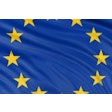The Nuclear Medicine and Molecular Imaging Department of the University Medical Centre Groningen (UMCG) received the European Association of Nuclear Medicine's (EANM's) Technologists’ Award for Best Oral Presentation at the EANM 2024 annual meeting, held recently in Hamburg, Germany.
The association said that UMCG's winning entry advances pediatric diagnostic imaging by reducing radiation exposure for children undergoing [F-18] FDG long axial field-of-view (LAFOV) PET/CT scans.
The study, conducted between 2021 and 2024, included 39 patients ranging in age from two months to 17 years. The UMCG researchers found that LAFOV PET/CT achieved an 81% reduction in pediatric radiation doses compared with the EANM’s 2024 pediatric dosage card for conventional PET/CT, while maintaining clinically acceptable image quality.
 A significant cut in pediatric radiation dose is feasible in F-18 FDG long axial field-of-view PET/CT. Courtesy of the Nuclear Medicine and Molecular Imaging Department of the UMCG and EANM.
A significant cut in pediatric radiation dose is feasible in F-18 FDG long axial field-of-view PET/CT. Courtesy of the Nuclear Medicine and Molecular Imaging Department of the UMCG and EANM.
The research also suggests that the current pediatric dosage card for conventional PET/CT may be unsuitable for long axial or total body PET/CT for children.
The UMCG has adopted LAFOV PET/CT as the exclusive imaging method for pediatric patients. It is currently studying further dose reduction possibilities to benefit other vulnerable patient groups.
The EANM said that an update to its own standardized dosage card is now in the works, which would allow hospitals and clinics across Europe to offer safe dosages for imaging technology.
The UMCG group is now preparing a peer-reviewed article to detail their methodology and results.




















